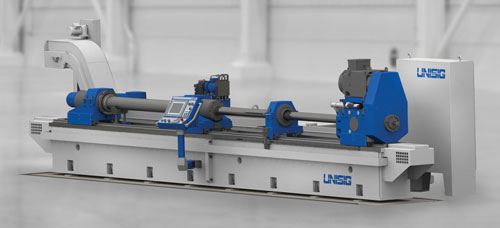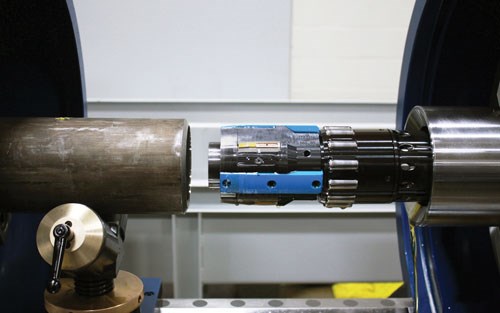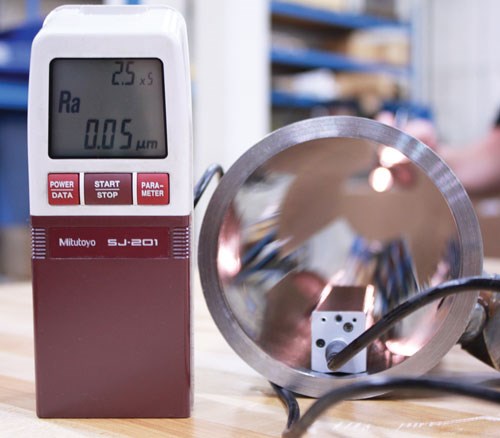For a hydraulic cylinder to operate effectively, the cylinder’s ID must be precisely round and have a mirror-like surface finish to ensure a tight seal between it and the mating internal piston. This is commonly achieved through skiving and subsequent roller burnishing inside a tubular workpiece. Skiving uses a set of carbide blades positioned around the diameter of a tool to slice away chips and create a geometrically round bore. Roller burnishing, a cold-working process, uses multiple rollers to compress the peaks of material left behind after skiving to generate an extremely smooth surface finish. Burnishing also introduces a residual stress layer into the cylinder wall, which improves cylinder fatigue life.
These operations are sometimes performed in one pass using a combination skiving/roller burnishing tool on a BTA-style deep-hole drilling machine. However,
Unisig, a supplier of machines, tools and automation for deep hole-making applications, has recently designed machines engineered specifically to perform skiving and roller burnishing operations, noting increasing demand in the hydraulics market for such equipment. Its S-series machines use a single tool for both operations, achieving roundness tolerances of IT-8 or IT-9 and bore surface finishes as smooth as Ra 0.05 to 0.2 micron in one setup and one tool pass.
Sarang Garud, applications engineer for Unisig, says that 80 percent of the S-series machine design is based on the company’s existing B-series (ballscrew-feed) BTA drilling machines. That said, he notes three distinct features that enable the S-series to be highly effective at skiving and roller burnishing:
• Workholding—The tubes used for hydraulic cylinders are relatively thin. Care must be taken to secure the tube rigidly enough for the skiving and roller burnishing processes, but not so tightly as to deform it. Therefore, clamping cones are typically used to hold the tubes on both ends instead of three-jaw chucks. This clamping method also facilitates quick workpiece changeovers in automated environments. In addition, extra support must be provided along the length of the tube due to the inherently high length-to-diameter ratio of these workpieces. The S-series uses a V-shaped hydraulic clamp to provide this support.
• Power train—Thin cuts are taken during skiving. A skiving blade’s radial engagement with the workpiece might be just 3 mm and feeds might be 1 mm per revolution, per blade. However, each tool has two or three skiving blades, which multiples the effective feed rate. Similarly, the cold-working roller burnishing process requires a lot of torque and high spindle speed as it plasticizes and compresses the peaks that skiving leaves behind. As a result, the S-series features a more robust power train with higher horsepower motors and faster spindle speeds than conventional BTA drilling machines.
• Rotary union—A hydraulic circuit inside the skiving and roller burnishing tool expands the skiving blades and burnishing rollers during cutting operations. Therefore, the S-series has a rotary union at one end of the tool headstock to provide a hydraulic connection throughout the length of the rotating tool. Once the cutting pass is completed, the blades and rollers are retracted into the tool as it is removed from the tube. The tool continues to rotate as it is removed, but nylon guides on the tool and continuous coolant delivery prevent damage to the cylinder wall.
The S-series machines are available in skiving/burnishing diameters ranging from 2 to 12 inches and lengths to 20 feet (larger machines are available upon request). The machines can also be modified to perform BTA drilling, counter-boring, and other drilling and tube-finishing operations. In addition, tools can be configured to perform tube finishing on a variety of metals.

.jpg;width=70;height=70;mode=crop)










.png;maxWidth=300;quality=90)














